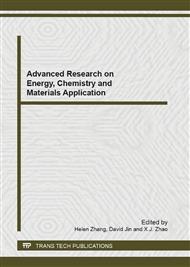p.35
p.39
p.46
p.50
p.55
p.60
p.66
p.70
p.74
The Application of Rock Pyrolysis Parameters in Predicting Shale Oil Favorable Area
Abstract:
Gulong depression is one of the inheritance deposition and subsidence center, also is the most developed secondary structural belt in Songliao Basin. In this research area, the total organic carbon TOC content of the shale in Qingshankou Formation is mainly more than 1%. The organic matter of the shale in Qingshankou Formation has better types, typeIis major and followed by typeII. The maturity of the source rock in Qingshankou Formation of Gulong area is greater than 0.7%, and up to 1.8%, mainly in the mature-high mature stage. Since the shale of Qingshankou Formation has the features of great thickness, higher organic matter abundance, better type and mature-high mature stage, also it is located in the junction between lake facies and delta front facies with better brittle mineral content, so its the key area of the exploration of shale oil. In this text, find the areas which is S1 is more than 2 mg/g and the brittle mineral (quartz and feldspar) content is more than 50% in Gulong depression, and this areas are consistent with the distribution of industrial oil wells and low yield industrial oil wells in research area. This text provides a fast and effective method for the exploration and development of oil shale.
Info:
Periodical:
Pages:
55-59
Citation:
Online since:
November 2013
Authors:
Price:
Сopyright:
© 2014 Trans Tech Publications Ltd. All Rights Reserved
Share:
Citation:


